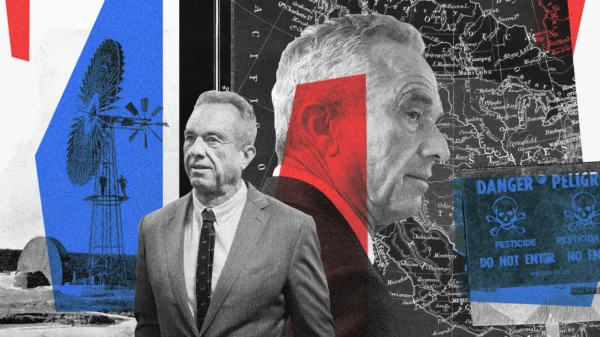Harnessing the Transformative Power of Virtual Reality (VR) Therapy for Improved Mental Health
In recent years, virtual reality (VR) has emerged as a groundbreaking technology with the potential to revolutionize therapy and improve mental health outcomes. VR’s immersive and interactive nature offers a unique platform for delivering therapeutic experiences that can alleviate stress, reduce depression, and treat anxiety disorders such as phobias and posttraumatic stress disorder (PTSD). Despite the promising results and increasing interest in VR therapy, its adoption among therapists and the wider public remains relatively low. In this article, we delve into VR therapy, exploring its benefits, addressing the barriers to adoption, and highlighting the potential solutions that can drive wider acceptance and utilization of this transformative approach to mental health care.
The Power of VR Therapy
Virtual reality therapy harnesses the power of immersive technology to create therapeutic environments and experiences that can simulate real-world scenarios. By leveraging VR headsets and specially designed software, therapists can guide patients through controlled exposure therapy sessions, allowing them to confront their fears and anxieties in a safe and controlled manner. Numerous studies have demonstrated the effectiveness of VR therapy in treating anxiety disorders, particularly specific phobias, and PTSD.
Overcoming Barriers to Adoption
While the efficacy of VR therapy is well-established, several barriers have hindered its widespread adoption. These barriers include:
- Cost: Historically, VR technology has been prohibitively expensive, making it inaccessible for many therapists and patients. However, technological advancements have resulted in the availability of more affordable and high-quality hardware systems. The decreasing costs of VR headsets and associated equipment make VR therapy more accessible to a broader audience.
- Training: Implementing VR therapy requires specialized training for therapists to utilize the technology and deliver optimal care effectively. Lack of training opportunities and limited familiarity with VR tools are significant barriers to adoption. To overcome this hurdle, it is crucial to provide comprehensive training programs and resources that equip therapists with the necessary skills and knowledge to leverage VR technology in their practice.
- Concerns about Efficacy and Confidentiality: Some therapists may have reservations about the efficacy of VR therapy compared to traditional approaches or concerns about patient confidentiality within the virtual environment. Addressing these concerns requires disseminating evidence-based research showcasing VR therapy’s positive outcomes. Additionally, implementing robust privacy and security measures to safeguard patient data can alleviate confidentiality concerns.
Bridging the Gap: Solutions for Wider Adoption
To realize the full potential of VR therapy and encourage its broader adoption, several strategies can be implemented:
- Evidence-Based Guidance and Research
Providing therapists with evidence-based guidance and research on the effectiveness of VR therapy is crucial. Sharing success stories and case studies that highlight the positive impact of VR therapy can build trust and confidence among therapists and patients alike. By showcasing VR therapy’s measurable outcomes and benefits, we can dispel any doubts and misconceptions surrounding its efficacy.
- Comprehensive Training Programs
Developing comprehensive training programs is essential to equip therapists with the knowledge and skills needed to effectively use VR technology. These programs should cover both the technical aspects of VR hardware and software and the therapeutic methodologies and best practices for delivering VR-assisted exposure therapy. By investing in training initiatives, we can empower therapists to embrace VR therapy as a valuable tool in their therapeutic arsenal.
- Collaboration and Partnerships
Collaboration among stakeholders in the mental health community, including therapists, researchers, technology developers, and policymakers, is crucial to driving the adoption of
VR therapy. By fostering partnerships, we can pool resources, share expertise, and collectively work towards overcoming the barriers that impede wider adoption. Collaborative efforts can lead to the development of standardized protocols, guidelines, and ethical frameworks that ensure VR therapy’s responsible and effective use.
- Cost Recovery and Alternative Payment Models
Addressing cost concerns is vital to making VR therapy financially viable for therapists and accessible to patients. Exploring cost recovery strategies, such as reimbursement models through insurance coverage, can incentivize therapists to incorporate VR therapy into their practice. Additionally, exploring alternative payment models, such as subscription-based services or outcome-based payment structures, can make VR therapy more affordable and sustainable for patients.
Conclusion
Virtual reality therapy holds immense promise for transforming mental health care and revolutionizing therapy practices. By leveraging VR’s immersive and interactive nature, therapists can create powerful therapeutic experiences that address a wide range of mental health disorders. To unlock the full potential of VR therapy, it is essential to overcome the barriers to adoption by providing evidence-based guidance, comprehensive training programs, and fostering collaboration among stakeholders. By embracing these solutions, we can pave the way for a future where VR therapy is widely accepted, accessible, and integrated into mainstream mental health care.








































